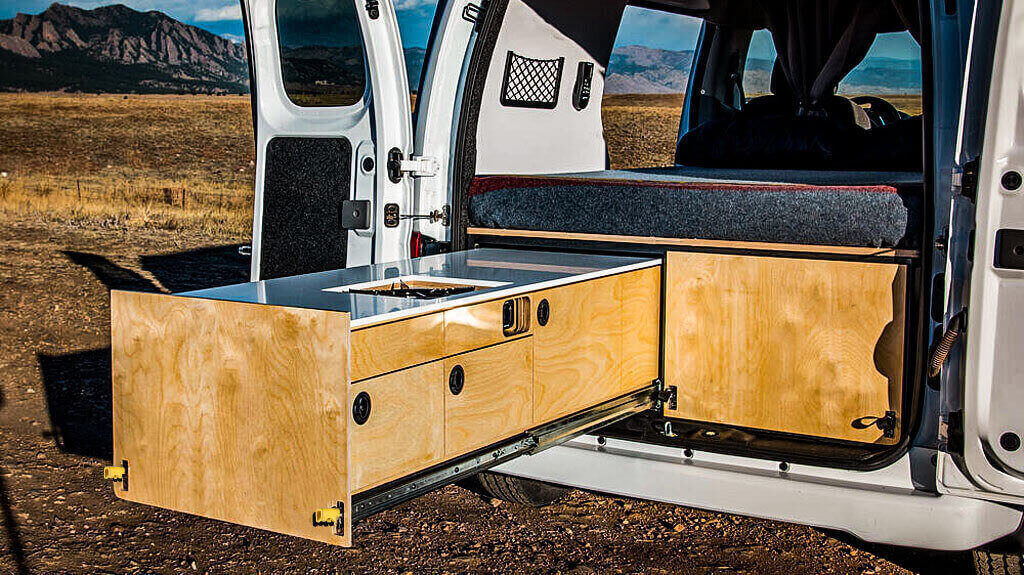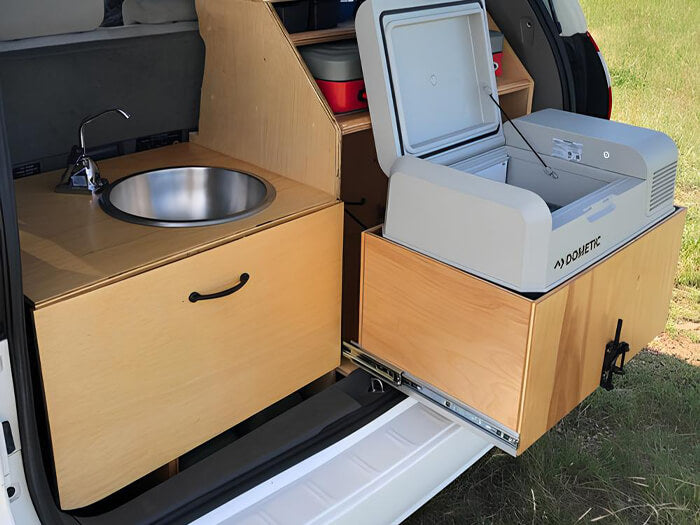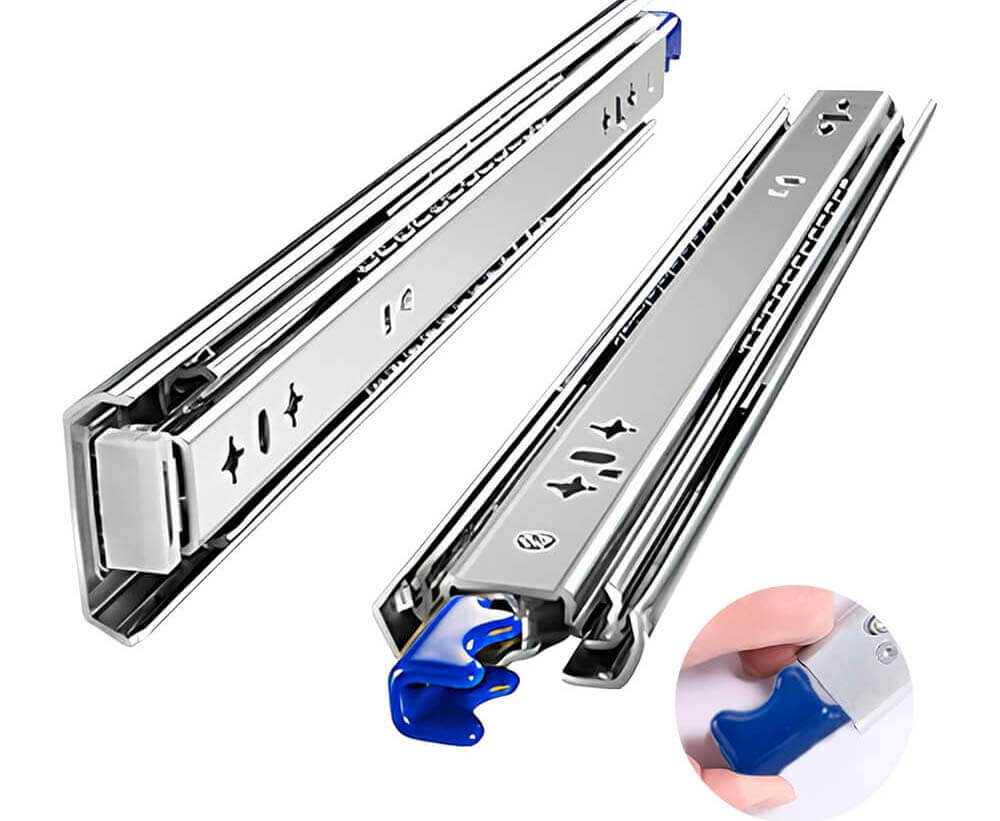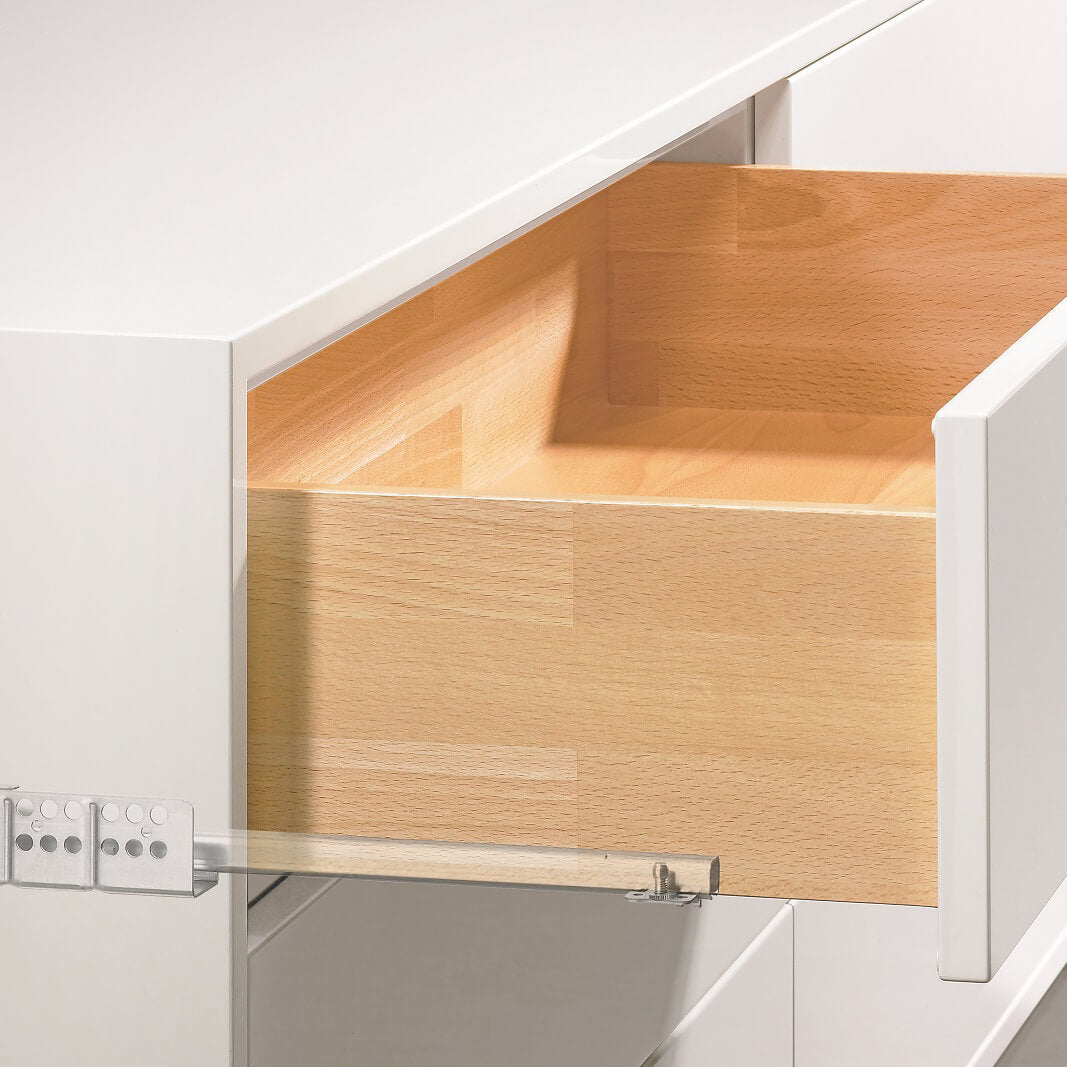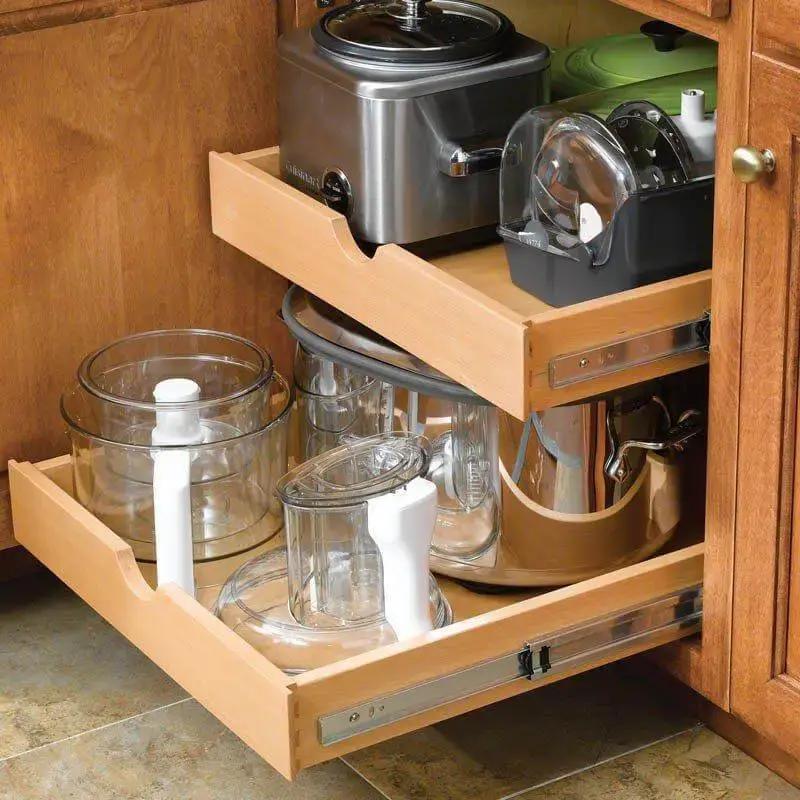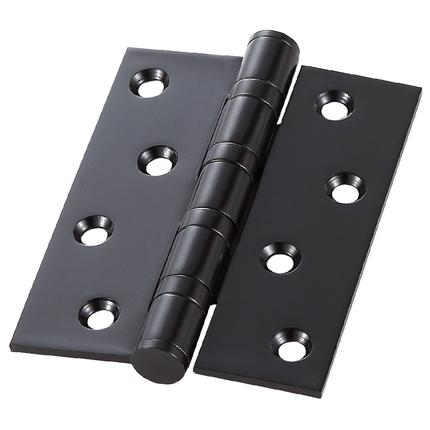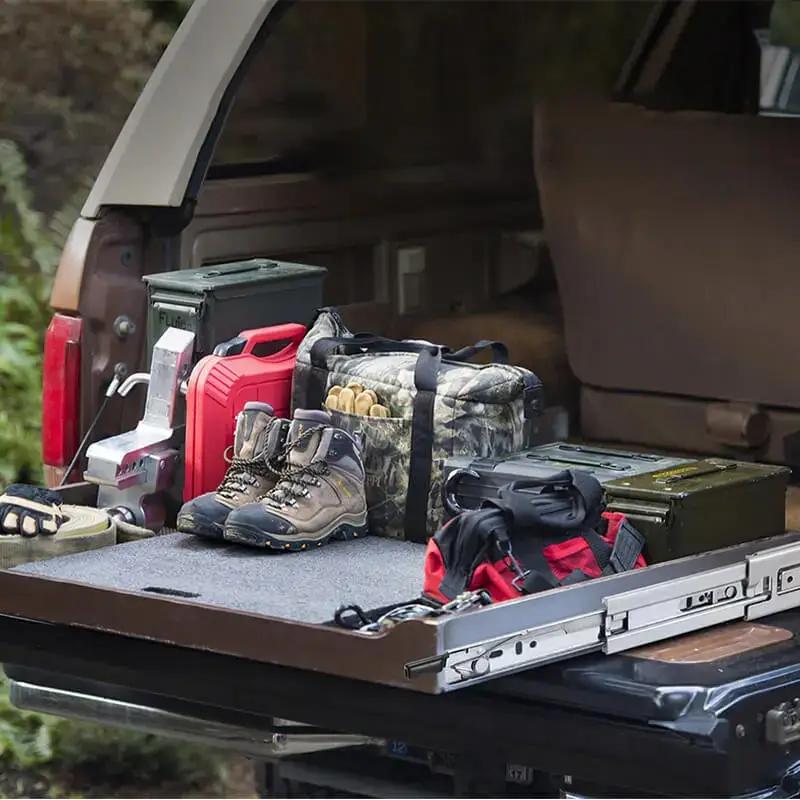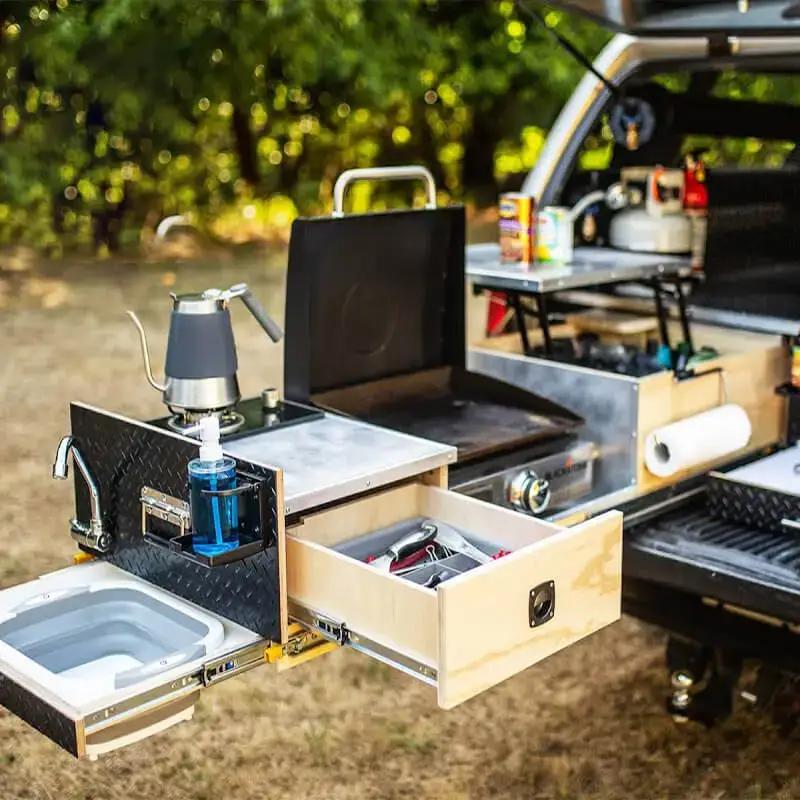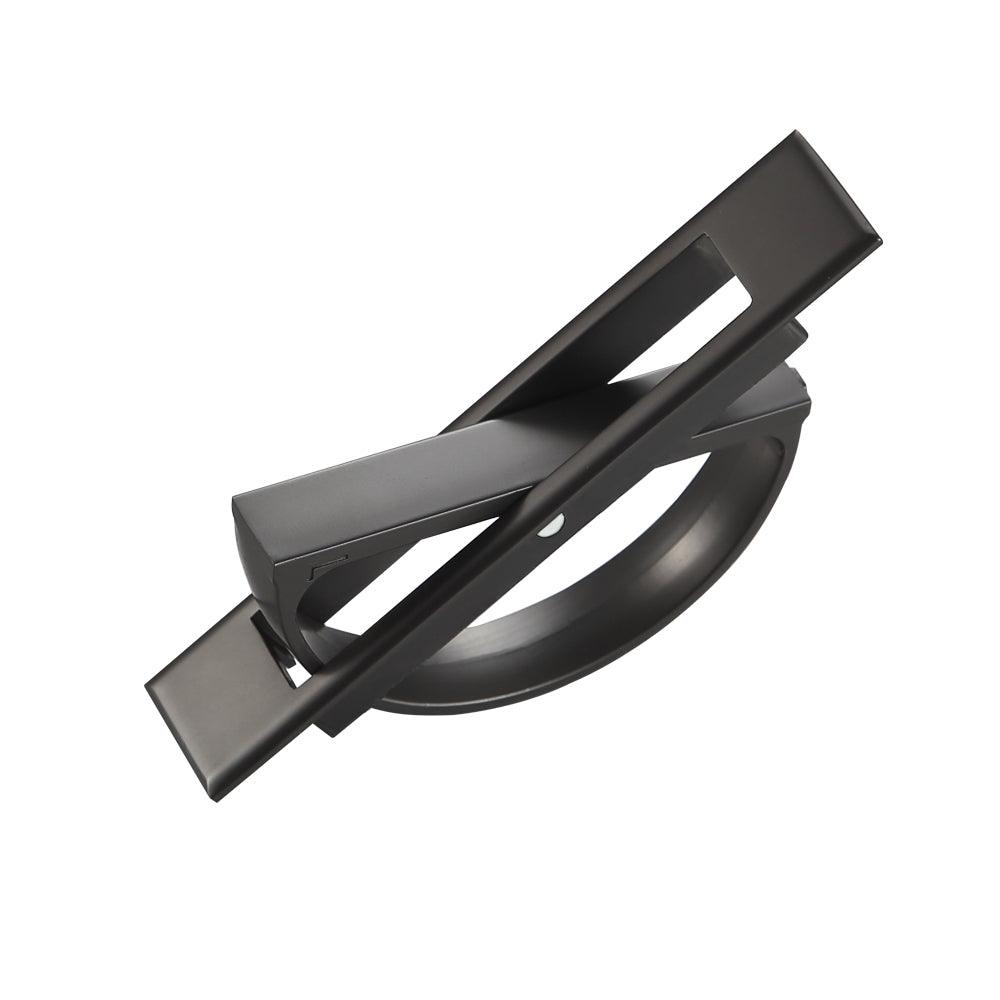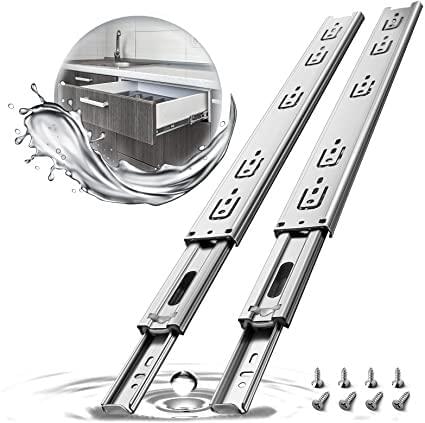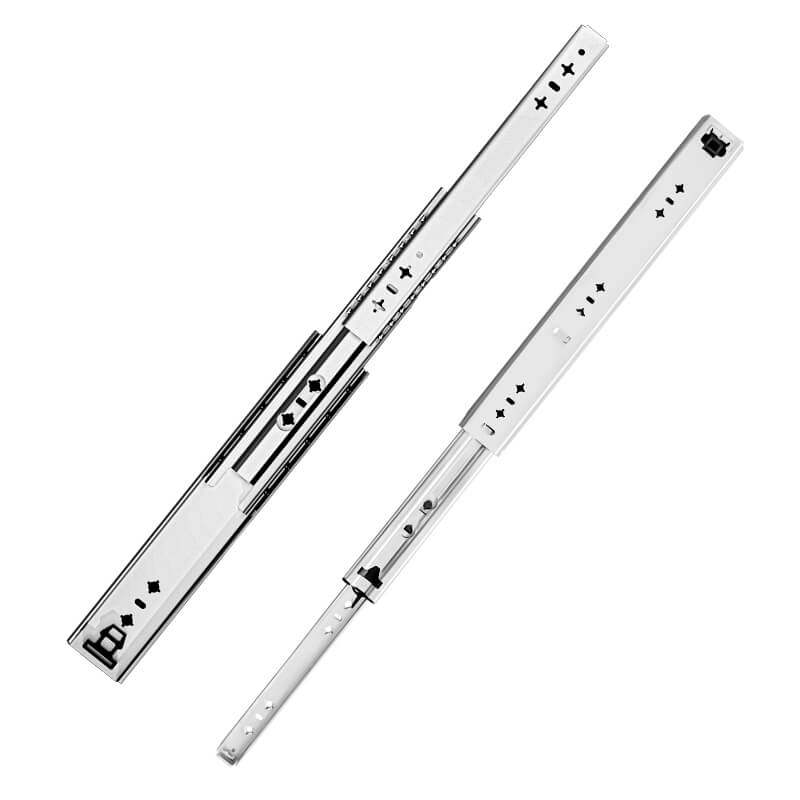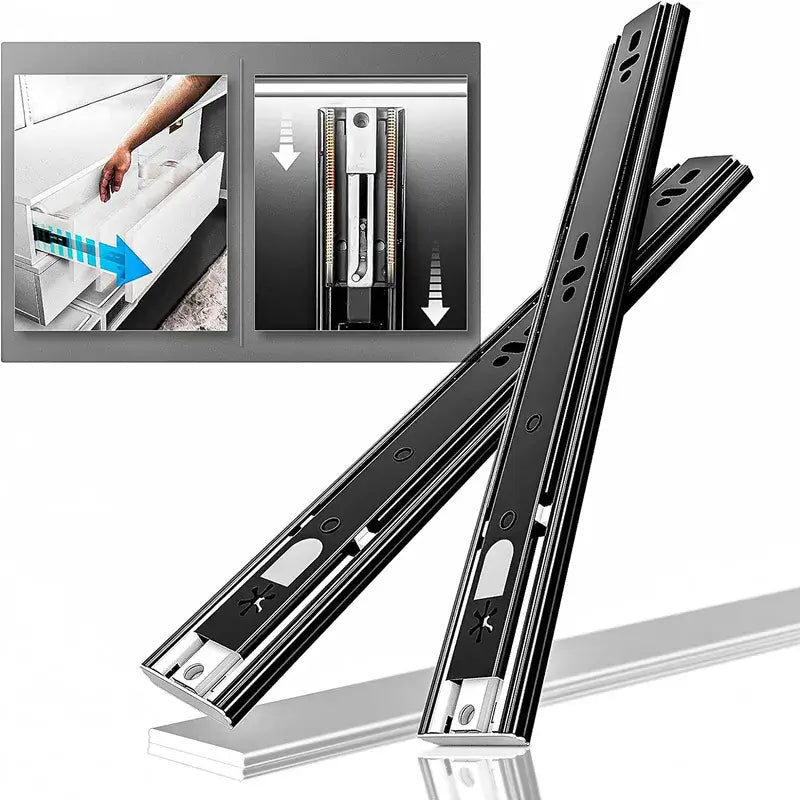Measuring drawer slides accurately is crucial for a successful installation. Whether you are replacing existing slides or fitting new ones, understanding the correct measurement process is essential. This blog outline will guide you through the steps to measure drawer slides effectively.
Why Accurate Measurement Matters
Accurate measurement is paramount when working with drawer slides, as it directly impacts the functionality and safety of your drawers. Here's why getting the measurements right is crucial:
Ensuring Smooth Operation: Properly measured drawer slides allow drawers to glide smoothly in and out without any hitches or jams. Incorrect measurements can lead to misalignment and hinder the slide's movement.
Preventing Installation Issues: Accurate measurements prevent common installation problems, such as slides that are too long or too short for the drawer, which can result in unstable or non-functional drawers.
Maximizing Drawer Space: By measuring precisely, you can choose drawer slides that fit snugly within the cabinet, optimizing the available drawer space efficiently.
Securing Heavy Loads: drawer slides are often chosen for their ability to support heavy loads. Accurate measurements ensure that the selected slides have the appropriate load capacity to bear the weight without any strain.
Safety and Security: Properly measured and installed drawer slides enhance safety, preventing accidental opening and potential injuries.
Cost-Effectiveness: Accurate measurements minimize the risk of purchasing the wrong size of drawer slides, saving you time and money on unnecessary replacements.
When measuring for drawer slides, pay close attention to the length, width, and depth of the drawer space. Double-check your measurements to guarantee a perfect fit and reliable performance for your drawers.
Measuring Existing Drawer Slides (If Applicable)
If you are replacing existing drawer slides with drawer slides, it's essential to measure the current slides accurately to ensure a seamless transition. Follow these steps to measure existing drawer slides:
Remove the Drawer: Gently pull the drawer out until it reaches its maximum extension. Lift the front of the drawer slightly to clear the stop, and then continue pulling to remove it from the cabinet.
Measure Slide Length: Measure the entire length of the existing slide, starting from one end to the other. Include any brackets or mounting tabs in the measurement.
Measure Slide Width: Measure the width of the slide, including any side brackets or flanges.
Check Slide Extension Type: Determine if the existing slides are full extension, partial extension, or over-travel slides. This information will help you select the appropriate drawer slides for replacement.
Verify Load Capacity: Look for the load capacity rating on the existing slides. Ensure that the new drawer slides have a similar or higher load capacity to accommodate your drawer's contents.
Assess Slide Condition: Inspect the condition of the existing slides for any signs of wear, damage, or rust. Consider replacing them if they are no longer functioning optimally.
By accurately measuring the existing drawer slides, you can confidently select the right drawer slides to match your current setup. Proper measurement ensures a smooth and successful upgrade, enhancing the functionality and security of your drawers.

Measuring the Drawer Box
To ensure a perfect fit for your new drawer slides, measuring the dimensions of the drawer box is crucial. Follow these steps to accurately measure the drawer box:
Length Measurement: Measure the length of the drawer box from the back to the front edge. Place the measuring tape at the back of the box and extend it to the front, ensuring it follows the entire length of the box.
Width Measurement: Measure the width of the drawer box from side to side. Place the measuring tape at one side of the box and extend it across to the opposite side, ensuring it covers the entire width.
Depth Measurement: Measure the depth of the drawer box from the bottom to the top. Place the measuring tape at the bottom of the box and extend it to the highest point inside the drawer.
Confirm the Clearances: Check the clearances on both sides of the drawer box. Ensure that there is enough space between the drawer box and the cabinet walls to accommodate the drawer slides without any interference.
Consider Slide Thickness: Take note of the slide thickness specified by the manufacturer. Ensure that the drawer box has enough space to accommodate the slide's thickness without causing any obstructions.
Determine Load Capacity: Assess the weight of the items typically stored in the drawer. Choose drawer slides with a load capacity that matches or exceeds the weight of the drawer's contents.
By measuring the drawer box accurately, you can confidently select drawer slides that perfectly fit your drawer, ensuring smooth operation and maximizing the drawer's utility. Proper measurements contribute to the overall performance and longevity of the drawer system, offering a secure and organized storage solution.
Selecting the Right Drawer Slides
Choosing the appropriate drawer slides is essential to ensure the functionality and durability of your drawers. Consider the following factors when selecting the right drawer slides:
Weight Capacity: Determine the maximum weight your drawer needs to support. Select drawer slides with a load capacity that exceeds the weight of your drawer's contents to ensure smooth and stable operation.
Slide Extension Type: Decide on the desired slide extension type based on your drawer's intended use. Full extension slides allow the drawer to fully extend, providing easy access to the entire drawer. Partial extension slides offer partial access, while over-travel slides extend beyond the cabinet, providing complete access.
Slide Length: Choose drawer slides with a length that matches the measurement of your drawer box. The slides should fully accommodate the entire depth of the drawer box for optimal performance.
Slide Width: Ensure that the slide width aligns with the available space inside the cabinet. The slides should fit securely and smoothly within the cabinet sides to avoid any binding or misalignment.
Clearance Requirements: Consider the recommended clearance between the drawer box and the cabinet walls to ensure smooth sliding and prevent any potential obstructions.
Installation Type: Determine whether you require side-mount, undermount, or bottom-mount drawer slides based on your cabinet's design and construction.
Material and Finish: Choose drawer slides made from durable materials such as steel or stainless steel for enhanced longevity. Opt for a finish that complements the overall aesthetics of your drawers and cabinetry.
Locking Mechanism: Assess the type of locking mechanism offered by the drawer slides. Depending on your needs, you may prefer a simple manual lock or a more sophisticated self-locking mechanism.
By carefully considering these factors, you can confidently select the right drawer slides that perfectly match your drawer's requirements, providing you with a secure and reliable storage solution for years to come.
Measuring for New Drawer Slides

When upgrading or installing new drawer slides, accurate measurements are crucial to ensure a proper fit and smooth operation. Follow these steps to measure for new drawer slides:
Remove the Drawer: Gently pull the drawer out until it reaches its maximum extension. Lift the front of the drawer slightly to clear the stop, and then continue pulling to remove it from the cabinet.
Measure Slide Length: Measure the entire length of the drawer opening from the back to the front edge. Include any brackets or mounting tabs in the measurement.
Measure Slide Width: Measure the width of the drawer opening from side to side. Take note of any obstructions or obstacles inside the cabinet that may affect the slide's width.
Determine Slide Extension Type: Decide on the desired slide extension type based on your drawer's intended use. Consider whether full extension, partial extension, or over-travel slides best suit your needs.
Confirm Load Capacity: Assess the weight of the items typically stored in the drawer. Choose drawer slides with a load capacity that exceeds the weight of the drawer's contents for smooth and reliable operation.
Consider Slide Thickness: Take note of the slide thickness specified by the manufacturer. Ensure that the drawer opening has enough space to accommodate the slide's thickness without causing any obstructions.
Check Clearance Requirements: Measure the space between the sides of the cabinet and the drawer opening. Ensure that there is enough clearance to allow the drawer slides to function properly without binding or scraping against the cabinet walls.
Installation Type: Determine whether you require side-mount, undermount, or bottom-mount drawer slides based on your cabinet's design and construction.
By accurately measuring for new drawer slides, you can confidently select the right slides that perfectly fit your drawers, ensuring smooth and reliable functionality. Proper measurements contribute to the overall performance and longevity of the drawer system, offering a secure and organized storage solution for your belongings.
Additional Considerations
In addition to accurate measurements, there are other essential factors to consider when choosing drawer slides. Pay attention to the following considerations to ensure a successful drawer slide installation:
Drawer Material: Consider the material of your drawers. For heavy-duty applications or drawers with significant weight, opt for drawer slides made from durable materials like steel or stainless steel.
Drawer Usage: Evaluate the intended use of the drawers. For high-traffic areas or frequently used drawers, invest in high-quality locking slides to withstand the constant opening and closing.
Self-Closing Feature: Some drawer slides come with a self-closing feature, which ensures the drawer automatically closes securely without manual effort. This feature enhances convenience and safety.
Locking Mechanism: Determine the type of locking mechanism that best suits your needs. Manual locking systems require a separate lock to secure the drawer, while self-locking slides automatically engage when the drawer is closed.
Soft-Close Feature: Consider the soft-close feature, which gently pulls the drawer closed and prevents slamming. Soft-close drawer slides add a touch of elegance and reduce wear and tear on the drawer and cabinet.
Clearance Requirements: Check for any clearance requirements specified by the manufacturer. Ensure there is enough space for the locking mechanism to function smoothly without any obstructions.
Brand Reputation: Choose drawer slides from reputable brands known for their quality and reliability. Reading customer reviews and seeking recommendations can help you make an informed decision.
Budget: While quality should be a priority, consider your budget constraints. Invest in drawer slides that offer the best balance of quality and affordability.
By taking these additional considerations into account, you can confidently select the right drawer slides that align with your specific requirements and enhance the functionality and security of your drawers. Properly chosen and installed drawer slides provide a seamless and enjoyable experience, ensuring your drawers serve you well for years to come.
Conclusion
Choosing and installing the right drawer slides is essential for the smooth and secure operation of your drawers. By accurately measuring your drawer box and considering various factors, you can select drawer slides that perfectly match your needs. Here are the key takeaways:
Accurate Measurement: Take precise measurements of your drawer box length, width, and depth to ensure a proper fit for the drawer slides.
Weight Capacity: Choose drawer slides with a load capacity that exceeds the weight of your drawer's contents to ensure smooth and stable operation.
Slide Extension Type: Decide on the desired slide extension type based on your drawer's intended use, whether full extension, partial extension, or over-travel.
Clearance Requirements: Ensure there is enough clearance between the drawer box and the cabinet walls to prevent any obstructions during sliding.
Material and Finish: Opt for drawer slides made from durable materials such as steel or stainless steel, and choose a finish that complements your cabinetry.
Locking Mechanism: Select the appropriate locking mechanism, whether manual or self-locking, to suit your security needs.
Soft-Close Feature: Consider adding the soft-close feature for a gentle closing action and added convenience.
Brand Reputation: Choose drawer slides from reputable brands known for their quality and reliability.
By following these guidelines and considering additional factors, you can confidently select drawer slides that enhance the functionality, safety, and longevity of your drawers. Remember to always follow the manufacturer's installation instructions for a seamless and successful installation. Properly chosen and installed drawer slides will ensure your drawers serve you well for years to come, providing a secure and organized storage solution for your belongings.
Frequently Asked Questions
Why are drawer slides so expensive?
Drawer slides can be more expensive due to factors like high-quality materials, load capacity, advanced features, smooth glide technology, brand reputation, and customization.
How do I know what drawer slides to use?
Consider factors like drawer weight, size, slide extension type, mounting type, material, finish, budget, and reviews/recommendations to choose the right drawer slides for your needs.

